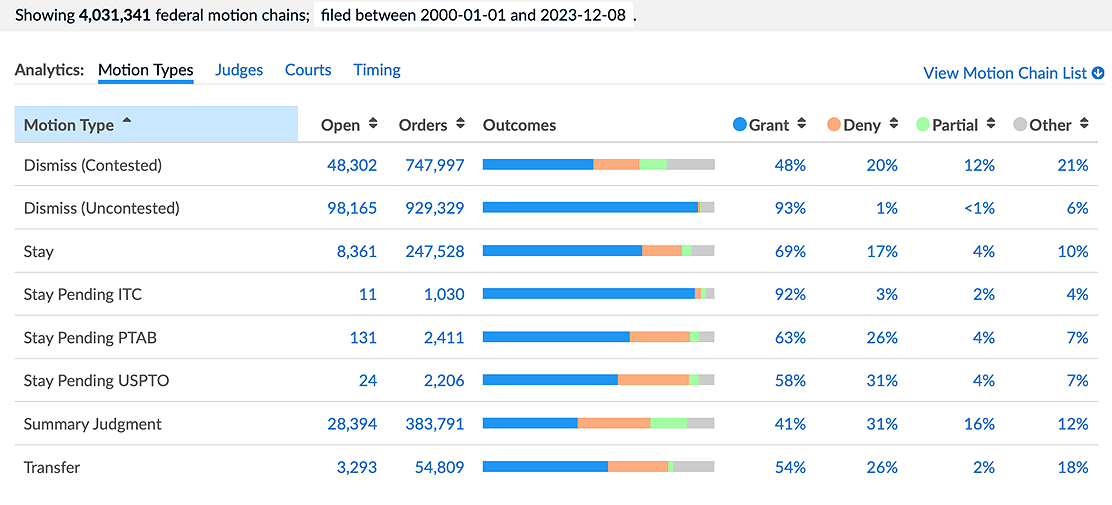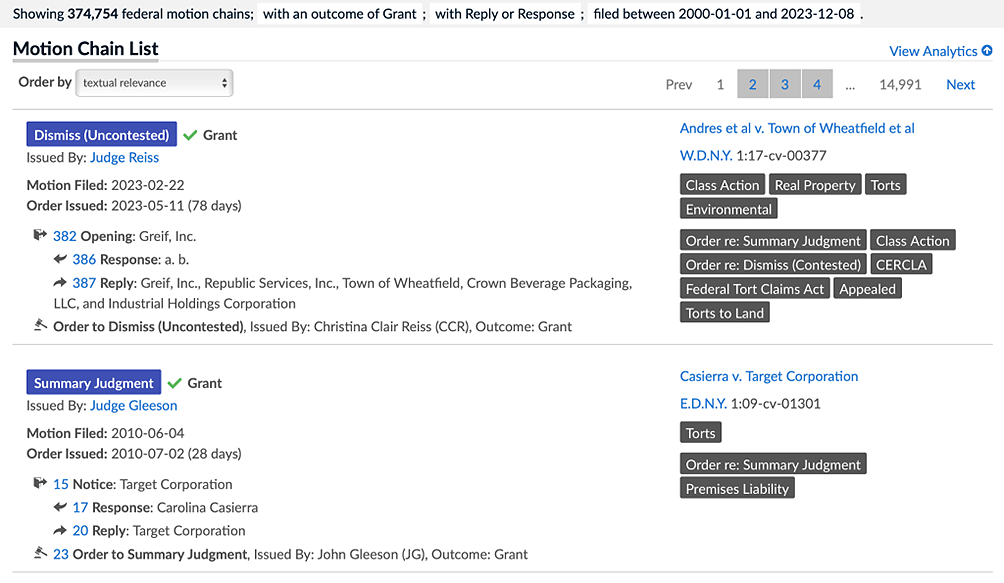The Lex Machina team is excited to launch new and enhanced motion metrics search and analytics capabilities for its existing Legal Analytics covering all federal district courts (the “Federal Motion Metrics”).
Lex Machina has always provided crucial information derived from motion metrics so that legal professionals could gain valuable data-driven insights into the different motions filed before a particular judge in a specific court. Now, with Federal Motion Metrics, it’s possible to search and analyze complete motion chains including the initiating motion, the responses and replies, and the order filed in federal district courts.

Lex Machina’s breakthrough ability to display the progression of a motion from initial filing to order as a streamlined thread enables legal professionals to understand the history and outcome of a motion without having to parse through the docket. Furthermore, Lex Machina’s curated filters empower users to conduct searches based on the motion metrics parameters most relevant to their current case or workflow, such as by motion type, case type, specific judge, the outcome of the motion, or by keyword.
With the current set of motions, documents, and filters in Federal Motion Metrics, users can:
- Explore eight motion types in depth
- Gain insights on the entire motion chain, from initial motion to order
- View customizable grant rates and outcomes of a particular set of motions
- Compare a judge’s grant rate for a specific motion against the grant rate of a broader set of courts
- Comprehend a specific party’s motion history by different motion types and in various roles
- Understand median time from filing of the motion to entry of the order for each motion type
- Filter by judge, court, motion type, outcome, and more
- Search and review relevant docket entries and certain documents underlying the analytics in order to easily discover winning motions before a particular judge to aid in motion drafting and strategy

Federal Motion Metrics help you answer questions such as:
- How often does Judge Dolly Maizie Gee grant a motion for summary judgment? How does this compare to the grant rate for these motions in her court, the Central District of California?
- How long does it take for Judge Cathy Seibel to rule on a motion to dismiss?
- How often have judges in the Western District of Texas denied a motion to transfer? Which judge had the highest denial rate in the past three years?
- In which employment cases have judges granted a motion to stay in the Northern District of Illinois? Which judge had the highest grant rate in the past five years?
Lex Machina’s Federal Motion Metrics is superior due to the systems the company uses to clean, organize, and enhance the data. Each newly filed motion is systematically allocated to the correct motion type category, initiating a “motion chain” that encompasses all available replies, responses, and the order pertaining to the motion. Lex Machina’s technology extracts crucial data including data regarding the parties involved with the motion, as well as timing from motion to ruling order. Lex Machina’s attorneys then apply and test the model for accuracy and completeness.
Depending on your subscription, users can access Federal Motion Metrics data now.
To learn more, contact our sales team.